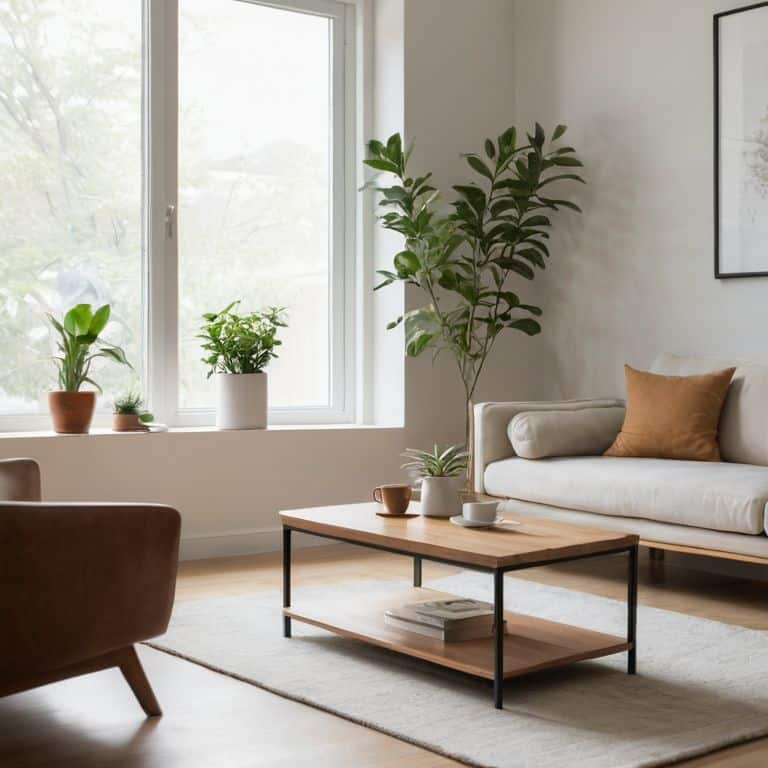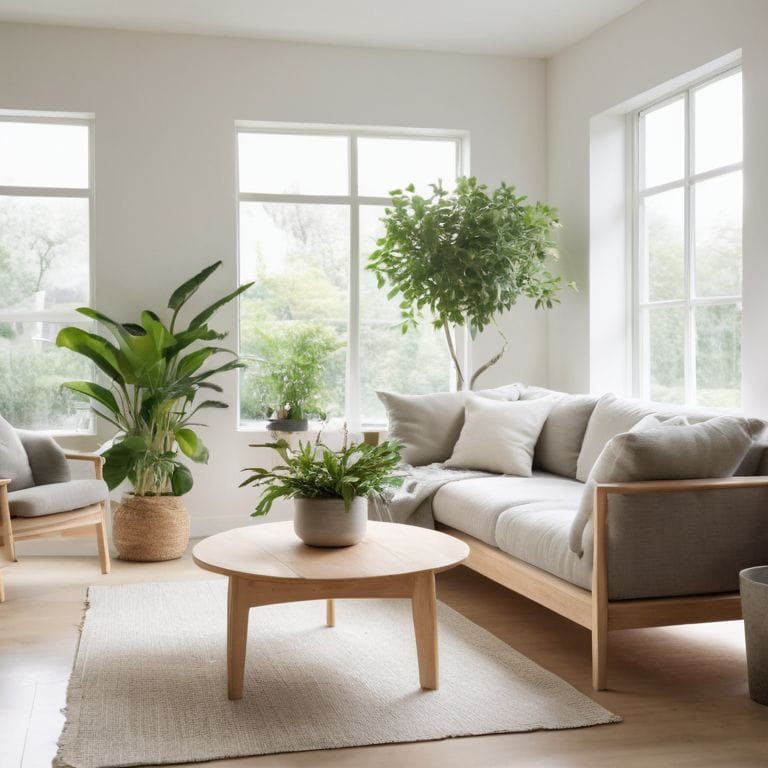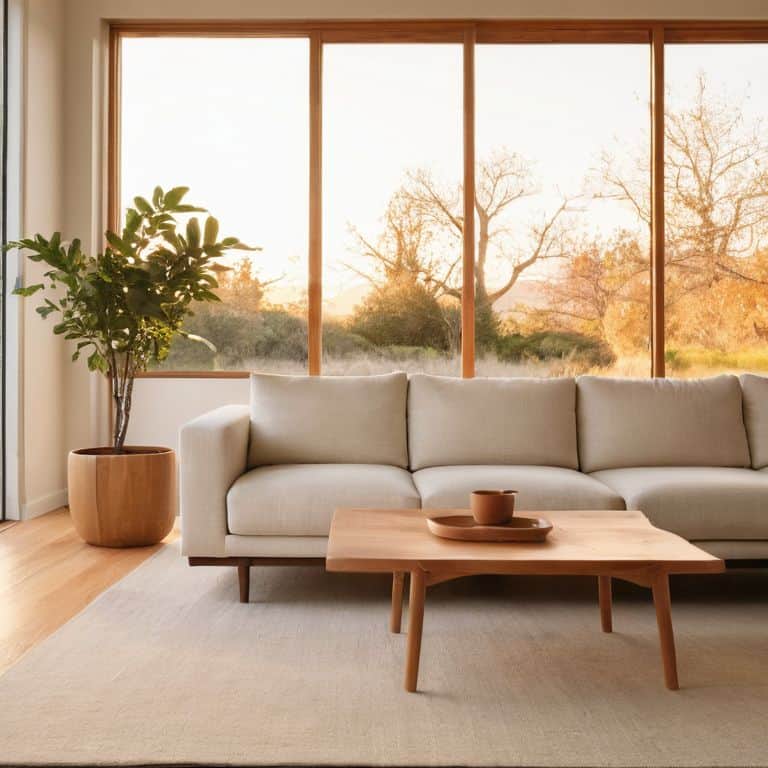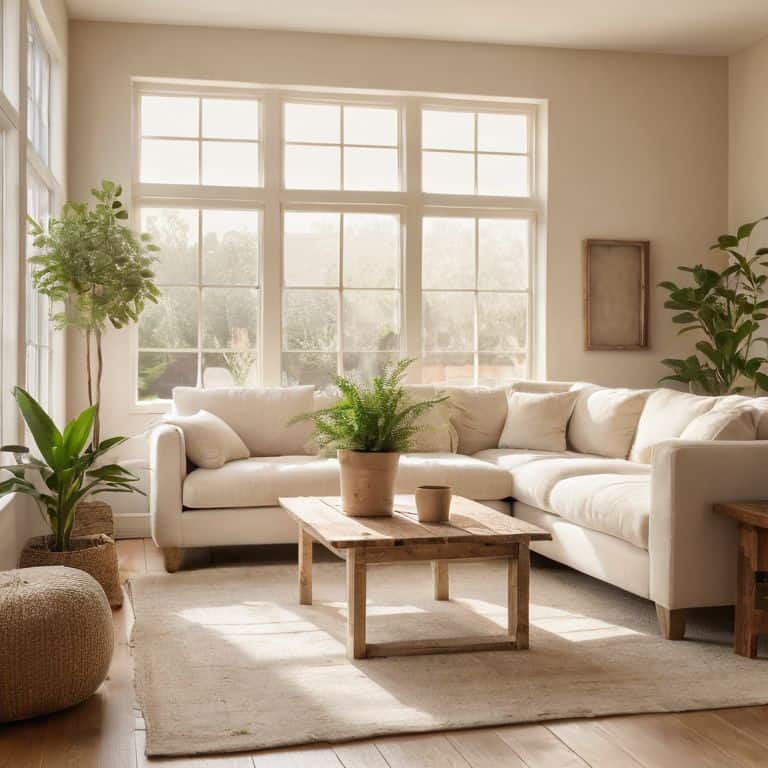As I sit in my own minimalist home, surrounded by the serene simplicity I’ve curated over the years, I’m reminded of the common misconception that creating such a space requires a complete overhaul of one’s life. The truth is, creating a minimalist home is not about drastic change, but about intentional choice. It’s about recognizing that every object in our home should have a purpose or a place, and that the absence of clutter can be a powerful catalyst for clarity of mind.
In this article, I’ll share my personal approach to creating a minimalist home, one that emphasizes the emotional benefits of organizing and the therapeutic power of simplicity. You’ll learn how to interview your belongings, how to distinguish between what sparks joy and what sparks stress, and how to create a space that truly feels like a sanctuary. My goal is to provide you with practical advice, not abstract theories or trendy tips, but honest, no-hype guidance on how to transform your living space into a reflection of your most peaceful self.
Table of Contents
Guide Overview: What You'll Need

Total Time: 5 hours 0 minutes
Estimated Cost: $500 – $1000
Difficulty Level: Intermediate
Tools Required
- Tape Measure (for accurate wall measurements)
- Level (to ensure shelves are straight)
- Drill (with screwdriver and drill bits)
- Sander (for smoothing out wood surfaces)
- Utility Knife (with extra blades)
Supplies & Materials
- 2-in x 4-in lumber (for building shelves)
- Plywood (for creating a minimalist desk)
- Wall Paint (for a fresh coat of paint)
- Rugs (to define different spaces)
- Minimalist Decor (such as plants or simple artwork)
Step-by-Step Instructions
- 1. First, let’s start by understanding that creating a minimalist home is not just about getting rid of stuff, but about creating a space that brings us peace and clarity. To begin, take a walk through your home and notice how you feel in each room. Are there areas that feel overwhelming or chaotic? Make a mental note of these spaces, as we’ll be tackling them first.
- 2. Next, we need to set our intentions for what we want to achieve with our minimalist home. What kind of atmosphere do we want to create? Do we want a space that’s perfect for relaxation, or one that inspires creativity? Take a few minutes to jot down your vision for your ideal living space, and keep it somewhere visible to refer back to throughout the process.
- 3. Now, let’s talk about the power of decluttering. This is often the most daunting part of creating a minimalist home, but it’s also the most liberating. Start by gathering some boxes or bags, and go through each room, sorting items into three categories: keep, donate/sell, and discard. Be ruthless – if you haven’t used it in the past year, it’s likely safe to let it go.
- 4. As we begin to declutter, it’s essential to interview each item and ask ourselves if it brings us joy or serves a purpose. If the answer is no, it’s time to let it go. This process can be emotional, but it’s a crucial step in creating a space that truly reflects our values and needs. Remember, every object in our home should have a purpose or a place.
- 5. Once we’ve decluttered, it’s time to think about functional furniture. As someone who enjoys carpentry, I can attest to the beauty of simple, handmade pieces. Consider investing in or creating furniture that serves multiple purposes, such as a storage ottoman or a desk with built-in shelving. This will help us maintain our newfound sense of minimalism.
- 6. Now, let’s focus on creating a maintenance routine. To keep our space clutter-free, we need to make tidying a habit. Set aside 10-15 minutes each day to put things back in their place, and schedule a deeper clean for once a week. This will help us stay on track and ensure our space remains a sanctuary.
- 7. As we near the end of our journey, it’s essential to bring in some greenery. Plants have a profound impact on our mental health and can help purify the air in our homes. Choose low-maintenance plants like succulents or bonsai trees (a personal favorite of mine), and place them in areas where you spend most of your time. This will help create a sense of calm and connection to nature.
- 8. Finally, let’s talk about sustaining our minimalist mindset. Creating a minimalist home is just the first step – maintaining it requires a shift in our mindset. Practice mindful consumption by being more intentional with our purchases, and avoid buying items that don’t align with our values or needs. By doing so, we’ll be able to enjoy our peaceful space for years to come.
Creating a Minimalist Home

As we embark on this journey to simplify our surroundings, it’s essential to consider the emotional benefits of a minimalist space. A clutter-free environment can have a profound impact on our mental well-being, allowing us to feel more grounded and focused. By incorporating simple home decor ideas, such as a monochromatic color scheme, we can create a sense of calm and serenity in our living spaces.
When it comes to decluttering, it’s crucial to start small and be intentional about the items we choose to keep. I often advise my clients to “interview” their belongings, asking themselves if each item serves a purpose or brings joy. This mindful approach to decluttering tips for beginners can help us develop a healthier relationship with our possessions and make the process feel more therapeutic.
By embracing minimalist furniture design and small space organization techniques, we can create a sense of flow and functionality in our homes. This, in turn, can foster a sense of sustainable living practices, as we become more mindful of our consumption and waste. As we cultivate this new mindset, we may find that our homes become a true sanctuary, a reflection of our values and priorities, and a space that nourishes both body and soul.
Decluttering Tips for Beginners
As we dive into creating a minimalist home, it’s essential to start with the foundation: decluttering. For beginners, this can feel daunting, but I encourage you to approach it as a therapeutic process. Begin by designating a small area, like your nightstand or a single shelf, and gently “interview” each item. Ask yourself, “Does this bring me joy or serve a purpose?” Be honest, and let go of items that no longer resonate with you. This simple exercise helps you develop a clearer connection with your belongings and sets the stage for a more mindful approach to your space.
By starting small and being intentional with each item, you’ll begin to cultivate a sense of clarity and control. Remember, decluttering is not just about removing physical objects, but also about creating space for mental clarity and calmness. As you progress, you’ll find that this mindful approach becomes a natural part of your daily routine, allowing you to maintain your newfound sense of serenity.
Simple Decor for Inner Peace
Simple Decor for Inner Peace
When it comes to decor, I believe in embracing the beauty of simplicity. A few, carefully chosen pieces can bring a sense of calm to a room, whereas too many can create visual noise. I like to think of decor as a way to tell a story – each piece should have a purpose or a place. For me, that means opting for natural materials, like wood and plants, which bring a sense of serenity to a space. By paring back our decor, we can create a sense of visual breathing room, allowing our minds to relax and unwind.
In my own home, I’ve found that a simple vase with a single branch or a small bonsai tree can be incredibly calming. The key is to create a sense of balance and harmony, rather than trying to fill every available space. By doing so, we can create a space that feels like a true sanctuary – one that nurtures both body and mind.
5 Essential Tips for a Minimalist Sanctuary
- Start by interviewing each item in your home: ask yourself if it serves a purpose or brings joy, and be honest with your answers
- Designate a ‘home’ for each item, ensuring everything has its place and can be easily found when needed
- Embrace the power of negative space: leave some areas of your home uncluttered and undecorated to create a sense of calm
- Prioritize functionality over aesthetics when it comes to furniture and decor, opting for simple, multi-purpose pieces
- Schedule regular ‘maintenance’ sessions to maintain your minimalist space, setting aside time to tidy and reassess your belongings
Key Takeaways for a More Serene Space
By intentionally curating the items in your home, you can create an environment that fosters clarity and calmness, allowing you to better navigate life’s challenges
Embracing minimalism is not just about removing clutter, but also about mindfully selecting what you allow into your space, ensuring each item serves a purpose or brings joy
Through the process of decluttering and organizing, you can transform your home into a sanctuary that not only reflects your values and personality but also nurtures your mental and emotional well-being
Embracing the Beauty of Less
As we strip away the clutter, we uncover not just our spaces, but our true selves, revealing a sense of calm, clarity, and purpose that was always there, waiting to be set free.
Nathan Reed
Embracing the Serenity of Minimalism

As we’ve journeyed through the process of creating a minimalist home, it’s essential to reflect on the key takeaways. We’ve discussed the importance of simple decor and how it can contribute to a sense of inner peace. Additionally, we’ve explored decluttering tips tailored for beginners, aiming to make the transition to a more minimalist lifestyle as smooth as possible. By applying these principles, individuals can transform their living spaces into sanctuaries that not only calm the mind but also foster a sense of clarity and purpose.
In the end, creating a minimalist home is about more than just removing clutter; it’s about cultivating a lifestyle of intention. As you stand in your newly simplified space, remember that the true beauty of minimalism lies not in the absence of belongings, but in the presence of peace, serenity, and a deeper connection to what truly matters. By embracing this mindset, you’re not just changing your home; you’re changing your life, one thoughtful decision at a time.
Frequently Asked Questions
How do I decide what belongings to keep and what to let go of when creating a minimalist home?
To decide what to keep and what to let go of, I recommend ‘interviewing’ each item. Ask yourself: Does it serve a purpose or bring joy? If not, it’s likely time to let it go. This simple yet powerful exercise helps clarify what’s truly important to you, making the decision process much easier.
What are some common mistakes people make when trying to adopt a minimalist decor style?
One common mistake is keeping items out of guilt or obligation, rather than purpose. I call this “emotional clutter.” It’s essential to remember that every object should have a purpose or a place. When decluttering, I encourage clients to “interview” each item, asking if it brings joy or serves a function.
Can a minimalist home still reflect my personal style and interests without cluttering the space?
Absolutely, a minimalist home can still reflect your personal style and interests. It’s about curating a few meaningful items that bring you joy, like a favorite piece of art or a handmade bonsai tree planter, and displaying them in a way that creates a sense of calm and serenity, rather than clutter.
